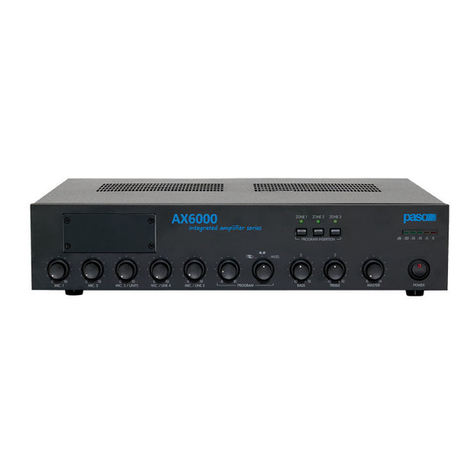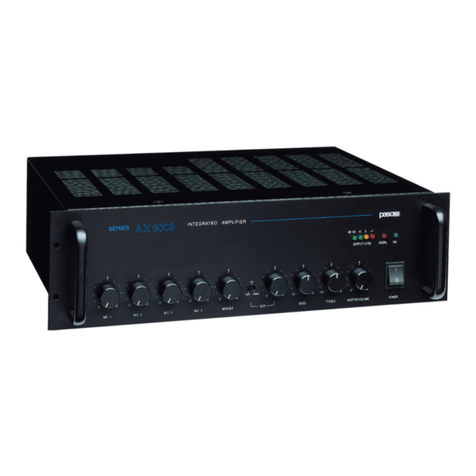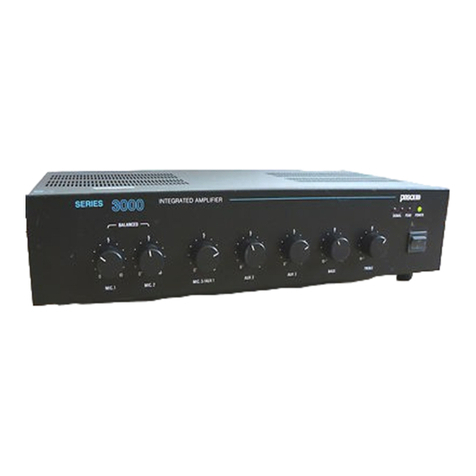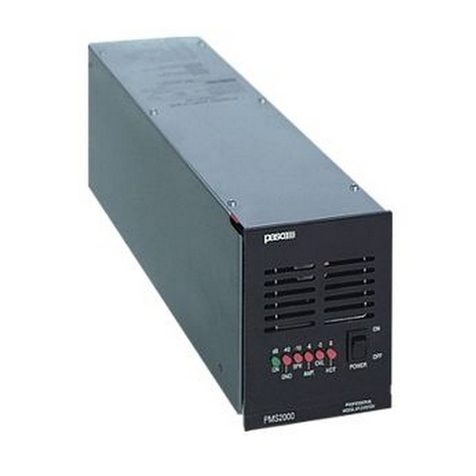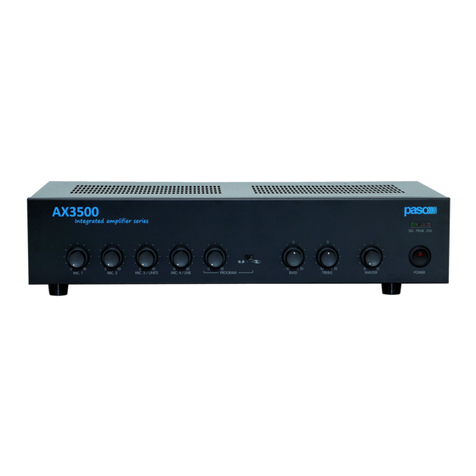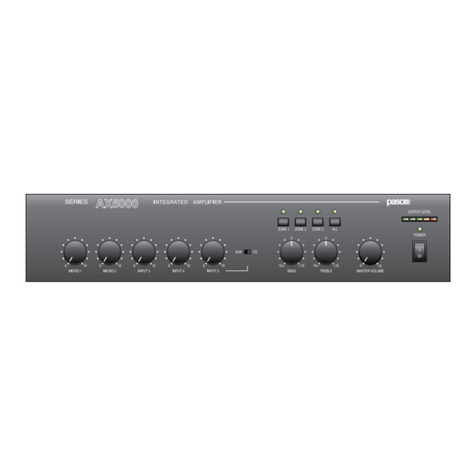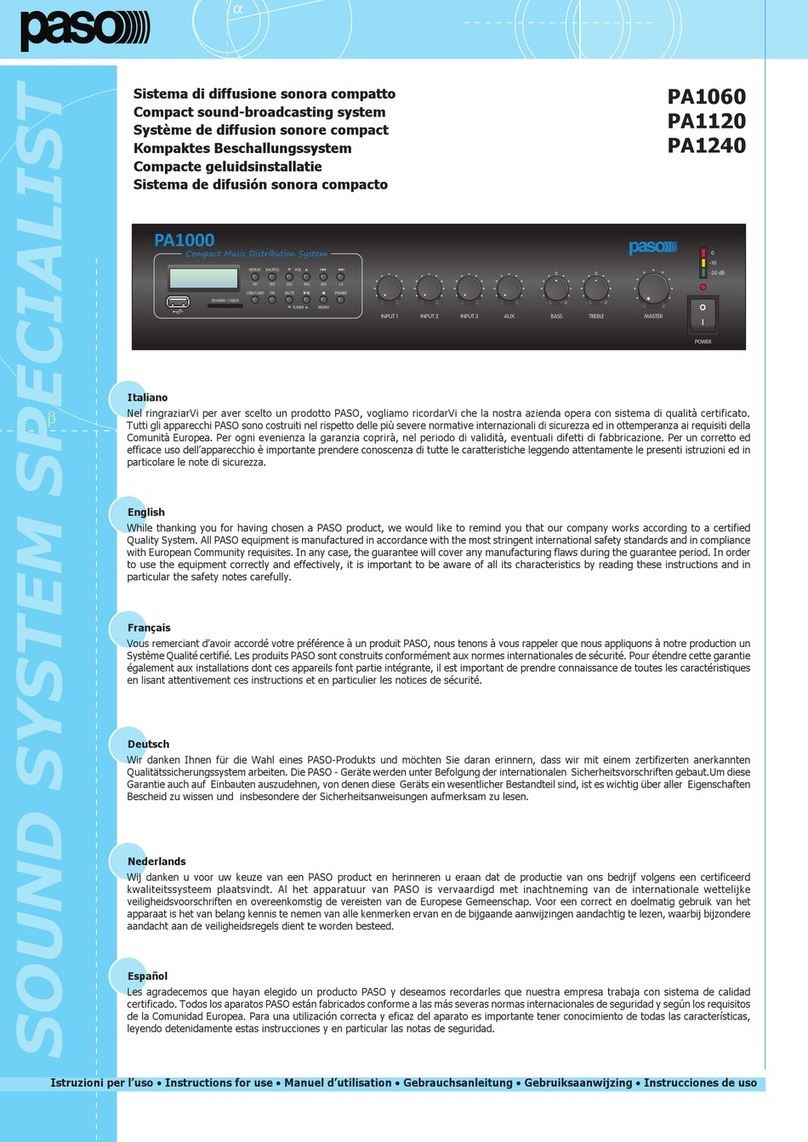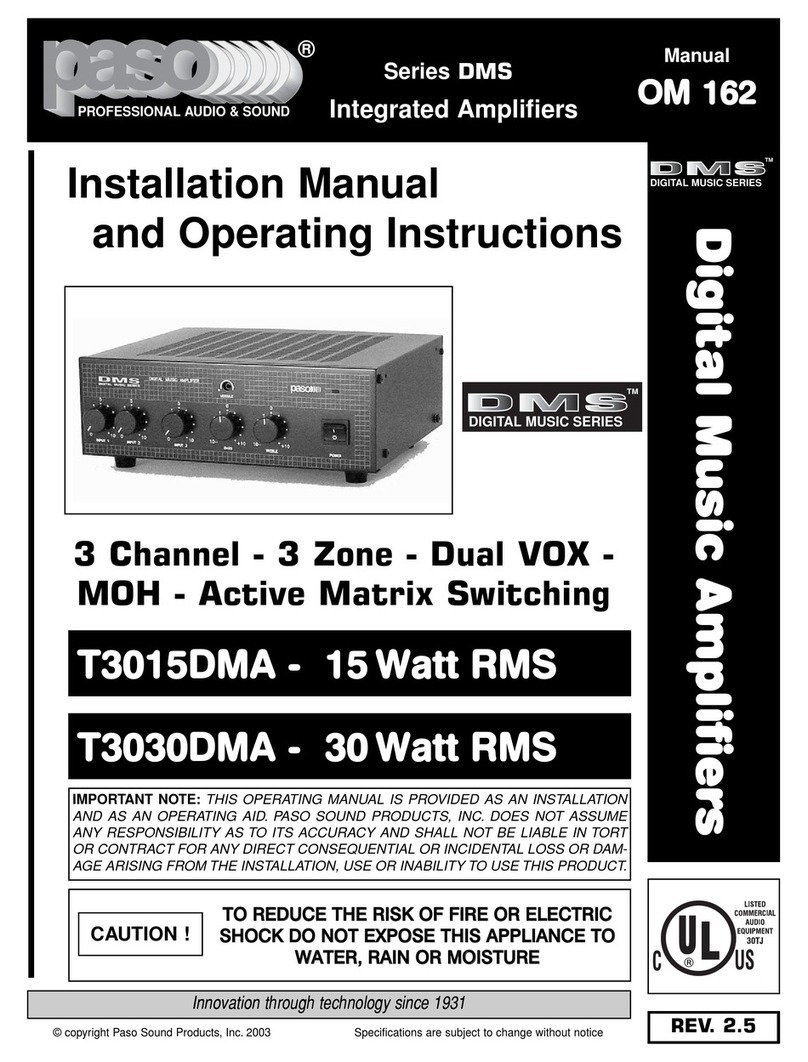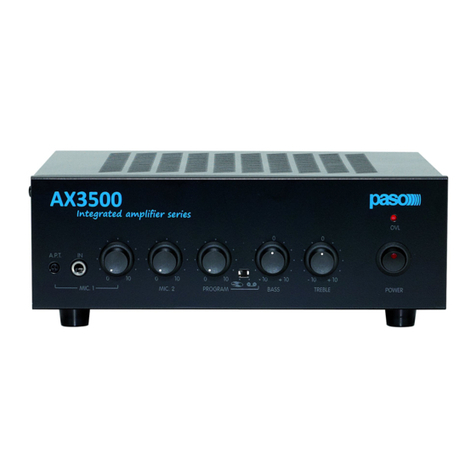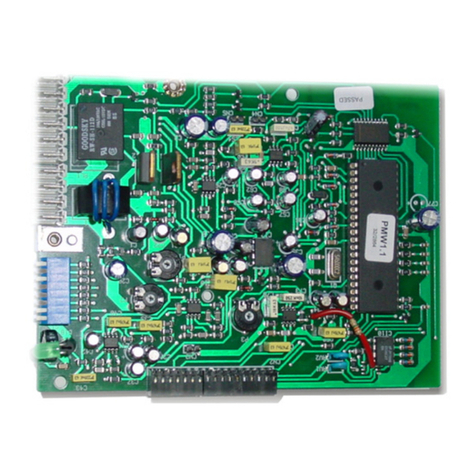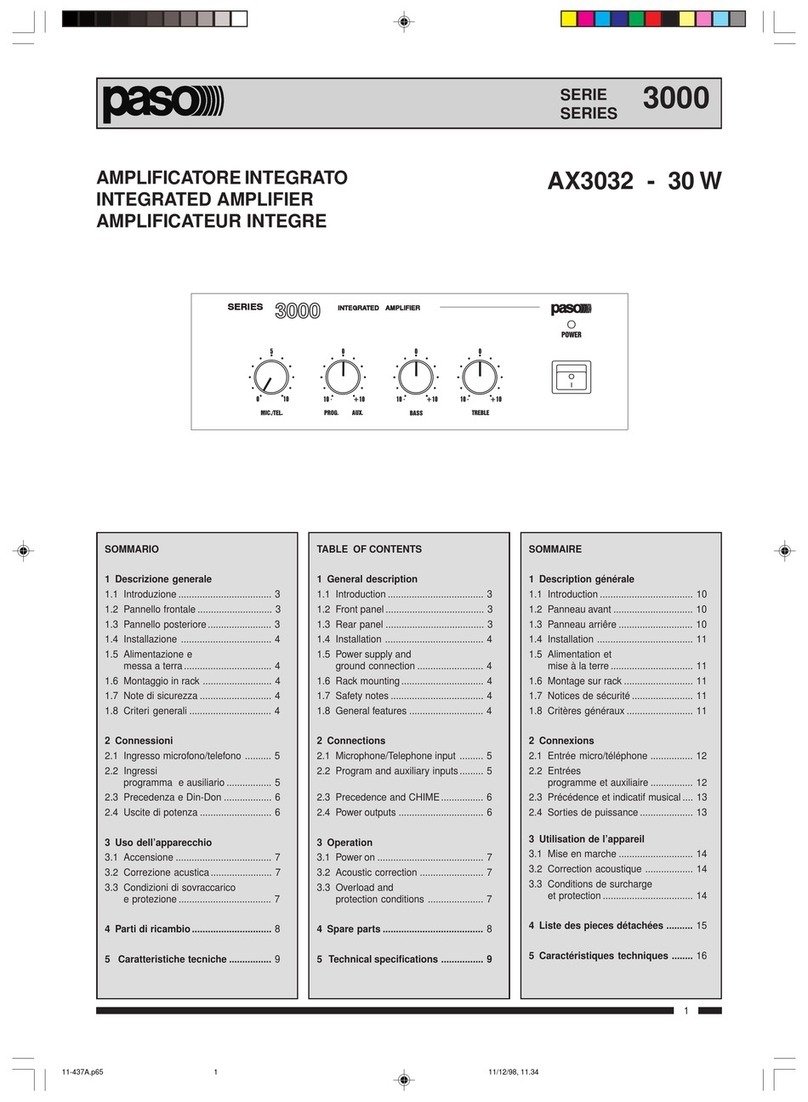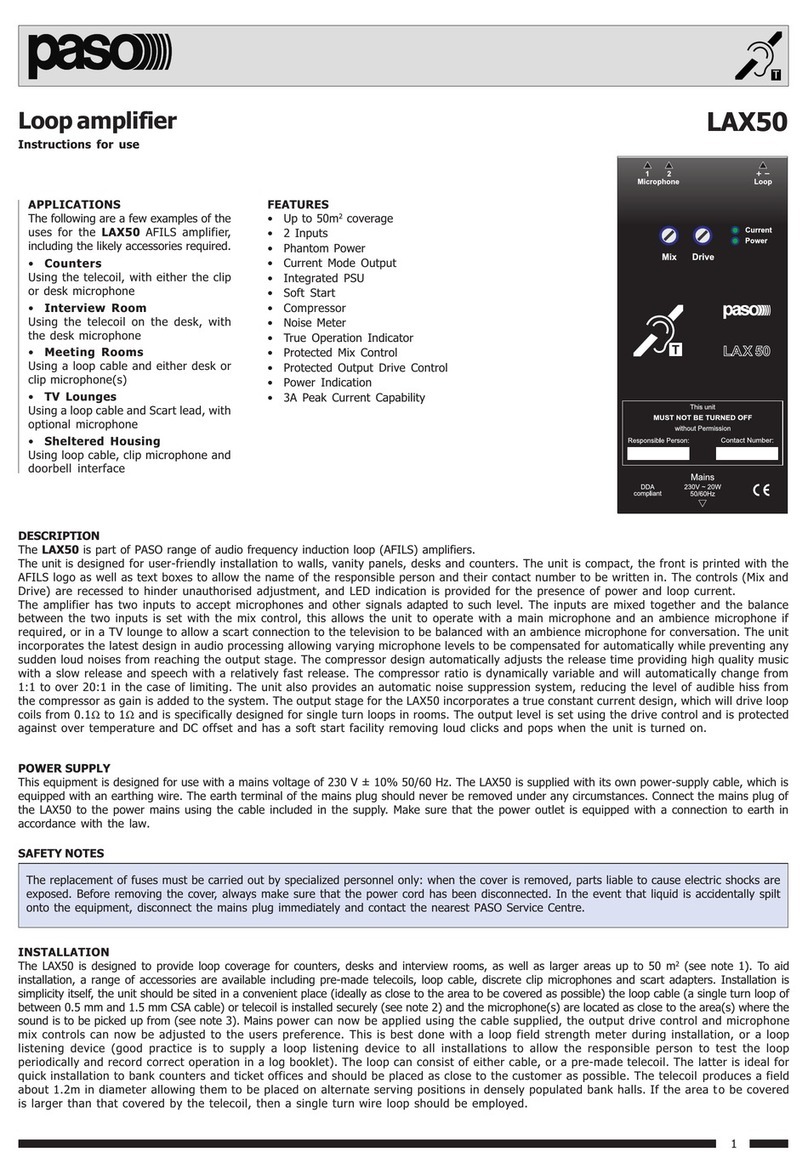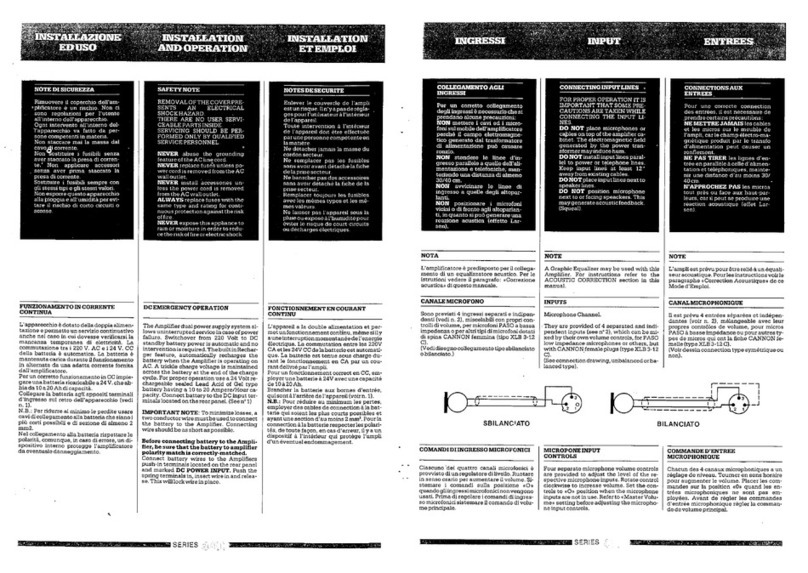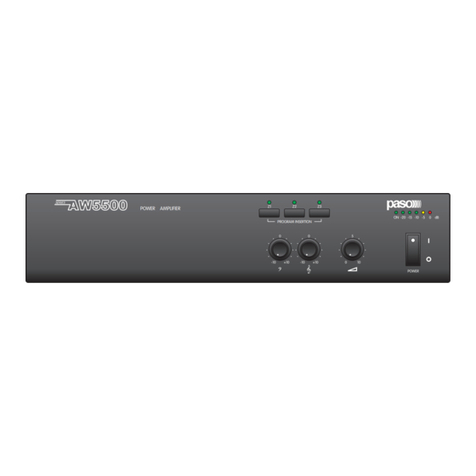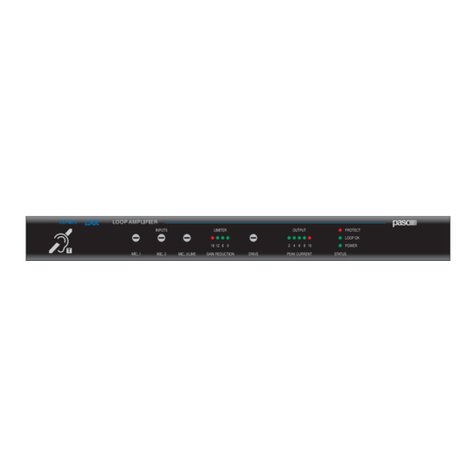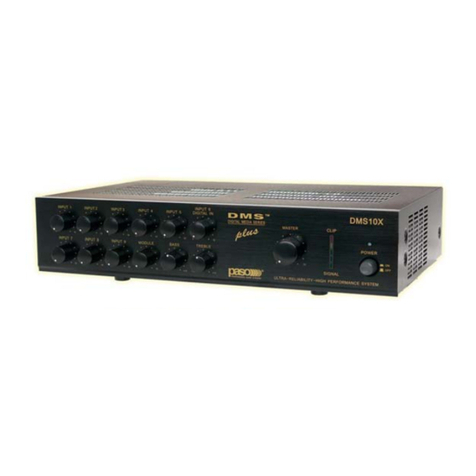
PMD SERIES
ISTRUZIONI PER L’USO
INDICE DEI CONTENUTI
1. Avvertenze............................................ 2
2. Descrizione generale ............................ 3
3. Installazione e connessione.................. 4
4. Impostazioni.......................................... 5
5. Uso dell’apparecchio ............................ 8
6. Note di servizio ..................................... 8
Caratteristiche tecniche................................9
Tavole di configurazione.............................26
I
Amplificatori Classe ‘D’
Class‘D’ Amplifiers
Verstärker Klasse ‘D’
PMD500-V PMD125-V
PMD250-V
INSTRUCTION MANUAL
TABLE OF CONTENTS
1. Warnings............................................. 10
2. General description..............................11
3. Installation and connection ................. 12
4. Settings............................................... 13
5. Using the equipment........................... 16
6. Service notes ...................................... 16
Technical specifications.............................. 17
Configuration tables.................................... 26
UK
Cert. EN 54-16: 2008
n° 0068-CPR-082/2013
Nel ringraziarVi per aver scelto un prodotto
PASO, vogliamo ricordarVi che la nostra
azienda opera con sistema di qualità certificato.
Tutti i nostri prodotti vengono pertanto controllati
in ogni fase della produzione per garantirVi la
piena soddisfazione del Vostro acquisto. Per
ogni evenienza la garanzia coprirà, nel periodo
di validità, eventuali difetti di fabbricazione.
Vi raccomandiamo di leggere attentamente le
seguenti istruzioni d’uso per sfruttare appieno
le prestazioni offerte da questo prodotto e per
evitare eventuali problemi.
While thanking you for having chosen a PASO
product, we
would like to remind you that our
company works according to a certified Quality
System. This means that all our products are
checked during every phase of manufacturing
in order to ensure that you will be fully satisfied
with your purchase. In any case, the guarantee
will cover any manufacturing flaws during the
guarantee period. We recommend that you
read the following instructions for use and
follow them carefully in order to exploit in full
the performance of this product and use it
correctly.
Wir danken Ihnen für die Wahl eines PASO-
Produkts und möchten Sie daran erinnern,
dass wir mit einem zertifizerten anerkannten
Qualitätssicherungssystem arbeiten. D.h., alle
unsere Produkte werden in jeder Fertigungsphase
kontrolliert, um Ihre vollständige Zufriedenheit zu
gewährleisten. Während des Gültigkeitszeitraums
deckt die Garantie auf jeden Fall eventuell
vorliegende Produktionsmängel ab. Wir empfehlen
Ihnen, die hier vorliegende Bedienungsanweisung
aufmerksam zu lesen, um das Leistungsangebot
des Produkts voll nutzen zu können und um
Probleme beim Gebraüch zu vermeiden.
GEBRAUCHSANLEITUNG
INHALTSANGABE
1. Warnhinweise ..................................... 18
2. Allgemeine Beschreibung ................... 19
3. Installation und Anschlüsse ................ 20
4. Einstellungen ...................................... 21
5. Verwendung des Geräts ..................... 24
6. Hinweise für den Betrieb..................... 24
Technische Eigenschaften..........................25
Konfigurationstafeln....................................26
D
